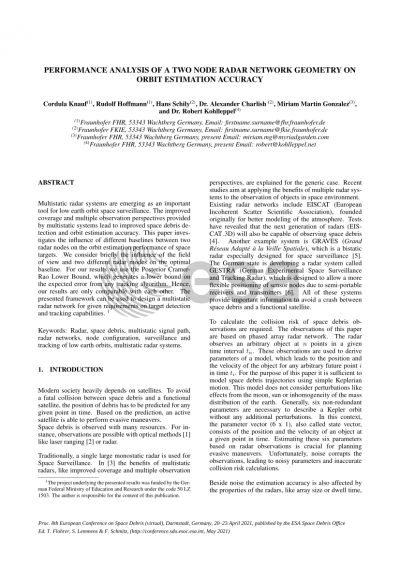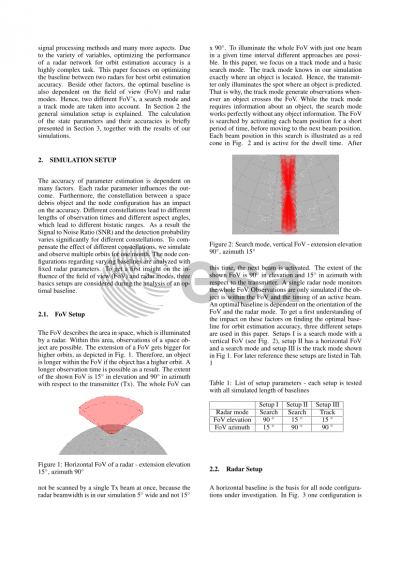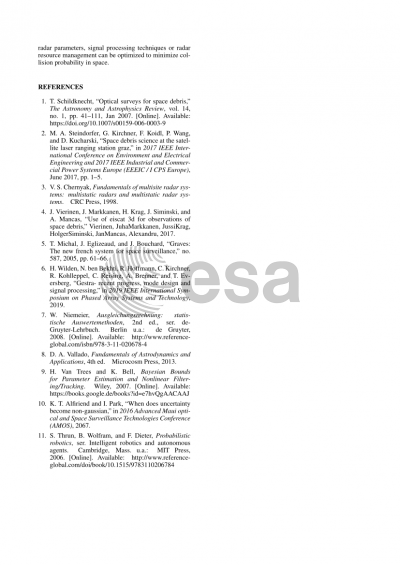Document details

Abstract
The increasing number of space debris objects poses a growing threat to operational satellites in low earth orbits (LEO). Accordingly, a thorough monitoring of the debris is essential in avoiding collisions and protecting space-borne infrastructure. Radar-based space surveillance typically uses large monostatic systems. The advent of partially mobile phased-array radars, like the German Experimental Space Surveillance and Tracking Radar (GESTRA), now opens the inherent possibility to be extended to a multistatic network of radars with multiple transmitters and receivers at different locations. The benefits of such multistatic systems are an improved coverage and multiple observation perspectives of the targets.
Distributed radar networks for space surveillance provide additional degrees of freedom as compared to large monostatic systems. Especially the geometry of a network and the field-of-view (FoV) scanned by the individual beams are subjects to optimization. In the present study we aim to determine the optimal baseline, i.e. the distance between the stations, for the simple case of a medium extend network consisting of two GESTRA-like stations. Medium extend networks are defined to have baselines which enable multipath signals to be observed, as opposed to local networks where only quasi-monostatic signal paths occur. We analyze a horizontal baselines, which is orientated in east-west direction, in the range from 50 to 950 km in 50 km increments. The used FoV has orthogonal opening angles of 15° and 90° with the transmitter at the center of the corresponding rectangular cone. To study a dependence on the orientation of the FoV we examine two different setups: a vertical FoV with the 90° angle aligned with the north-south direction and a horizontal FoV with the 90° angle aligned with the east-west direction. Both setups apply to a search mode, which is used if no specific object is tracked. In Addition, we analyze an optimal baseline for a track mode, where the radar follows the target objects.
We simulate the observations of 135 objects over a period of one month. That way the influence of the starting epoch is compensated for. Since our focus lies on the optimal geometry, simple Kepler orbits without any additional perturbations are applied. The orbit parameters and corresponding covariance matrix for each FoV setup and baseline are estimated at the end of the simulation period. To obtain a scalar parameter as a measure of the performance for the optimization, we derive the error volumes with respect to the covariance matrices of the estimated orbit parameters.
Our simulations show that for both FoV setups the error volumes are minimal for a baseline around 500 km. As a result, this orientation as well as the angular extend of the FoV have to be considered as important subjects to optimization in future studies.
Preview








